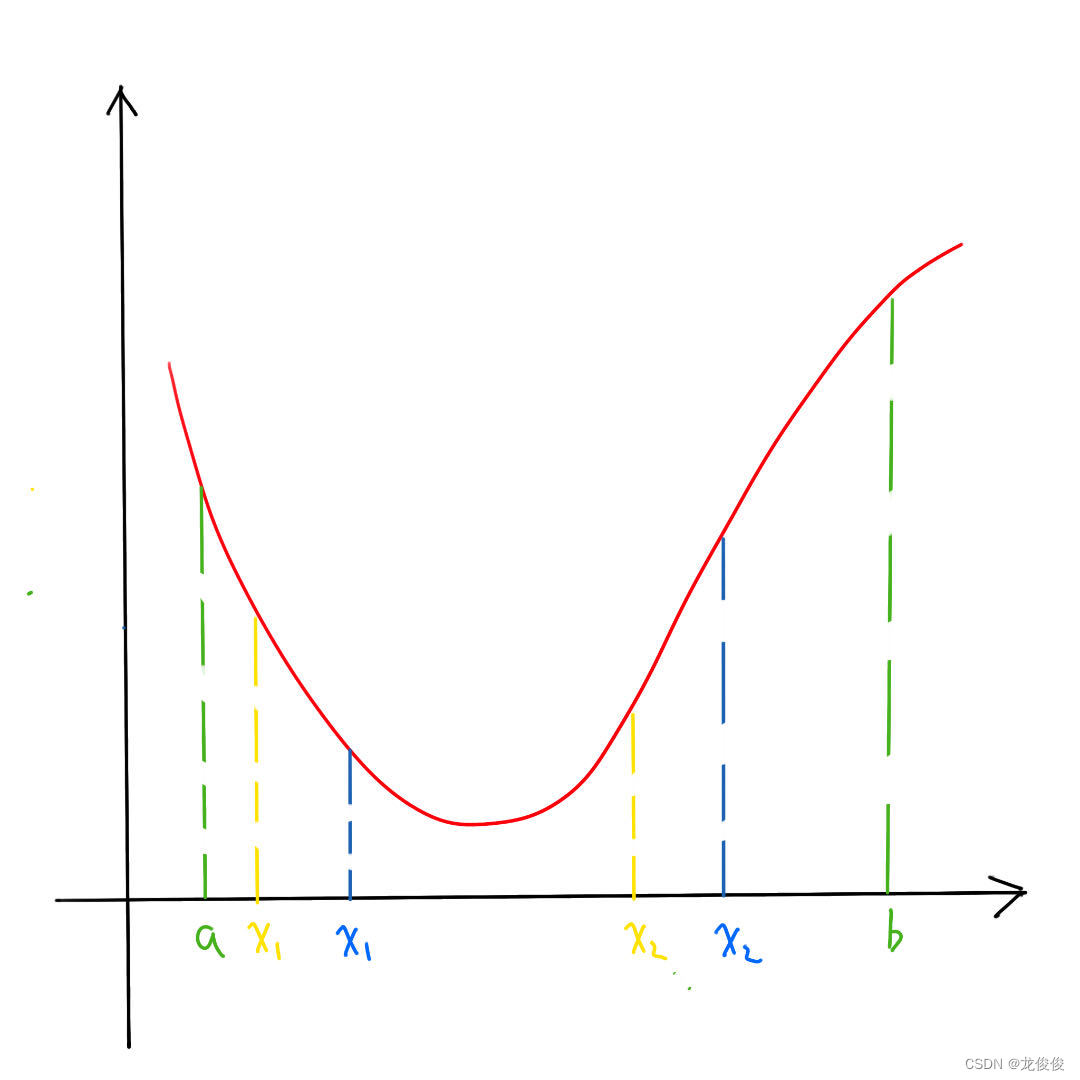1. Model introduction
The Fibonacci sequence is also called the rabbit sequence. Its values are: 1, 1, 2, 3, 5, 8, 13, 21, 34… Mathematically, this sequence is defined by the following recursive method:
F(0)=1, F(1)=1, F(n)=F(n – 1) + F(n – 2) (n ≥ 2, n ∈ N*).
This article introduces the fibonacci sequence into the optimal one-dimensional search to solve the optimization.
2. Model principle
Advantages of the 2.1 model
The Fibonacci sequence is used in one-dimensional exploration of unimodal functions to find the optimal value. Its main advantage is that it solves two function values in the first iteration and only needs to solve it once in each subsequent iteration. Model definition:

As shown in the figure: given initial value according to the model definition inferred:
(1).When:
(2).When:
When the first condition is met, bringing in the simplification leads to:
, we only need to output
That’s it
When the second condition is met, bringing in the simplification leads to:
, we only need to output
That’s it.
2.2 Algorithm design steps
(1) Given the initial interval , and the final interval length (accuracy) epsilon, find the number of times n to calculate the function value, so that
Then calculate the trial point
Calculate function valueset k=1
(2) If a-b is less than epsion, return , otherwise determine the size of
, if
, go to step (2)
(4)k increases automatically, let b = x_2, x_2 = x_1, and recalculate x_1
, go to step (2)
3. Code implementation
3.1 Input parameters and corresponding equations
from pylab import *
#Input parameters
a = float(input("Initial left endpoint"))
b = float(input("Initial right endpoint"))
epsilon = float(input("input precision"))
#Define parameters
def function(a):
fx = str_fx.replace("x", "a") # Replace all "x" with "%(x)function"
return eval(fx) #Dictionary format string, replace all "x" with variable x
init_str = input("Please enter a function, the default variable is x:\
") # The initial string entered
str_fx = init_str.replace("^", "**") # Replace all "^" with python's power form "**"
Example: Enter a=-10, b=10, epsilon=0.01
function = x^2 + 5*x + 5
3.2 Define the method of generating Fibonacci series
#Generate fibonacci sequence, note that this is in the form of a list
def fibonacci(n):
if n <= 0:
return[0]
elif n == 1:
return [0, 1]
else:
sequence = [0, 1]
while len(sequence) <= n:
next_number = sequence[-1] + sequence[-2]
sequence.append(next_number)
return sequence
Note that the generated list is
3.3 Find the value of n
#Get n value
n=2
while (b - a) / epsilon > fibonacci(n)[-1]:
n + = 1
print(n)
3.4 Define Fibonacci sequence search method
#Perform Fibonacci optimization search
def fibonacci_search(a, b):
k=1
x1 = a + (fibonacci(n - k -1)[-1] / fibonacci(n-k + 1)[-1]) * (b - a)
x2 = a + (fibonacci(n - k)[-1] / fibonacci(n-k + 1)[-1]) * (b - a)
f1 = function(x1)
f2 = function(x2)
while abs(b - a) > epsilon:
k+=1
if f1 < f2:
b = x2
x2 = x1
f2 = f1
x1 = a + (fibonacci(n - k-1)[-1] / fibonacci(n-k + 1)[-1]) * (b - a)
f1 = function(x1)
else:
a = x1
x1 = x2
f1 = f2
x2 = a + (fibonacci(n - k)[-1] / fibonacci(n-k + 1)[-1]) * (b - a)
f2 = function(x2)
return (a + b) / 2
#Define the module for drawing our given function image
3.5 Draw the graph of the function we gave
def drawf(a, b, interp):
x = [a + ele*interp for ele in range(0, int((b-a)/interp))]
y = [function(ele) for ele in x]
# y = [function(x)]
plt.figure(1)
plt.plot(x, y)
xlim(a, b)
#title(color="b")
plt.show()
Call the method drawf(a,b,0.05) to draw the image, where we define the interval as 0.05.

3.6 Call the defined method to obtain the optimal solution and optimal value
result = fibonacci_search(a, b)
print("x coordinate of minimum point:", result)
print("minimum value:", function(result))
drawf(a,b,0.05)
The result is as shown in the figure

The knowledge points of the article match the official knowledge files, and you can further learn related knowledge. Algorithm skill tree Home page Overview 56997 people are learning the system